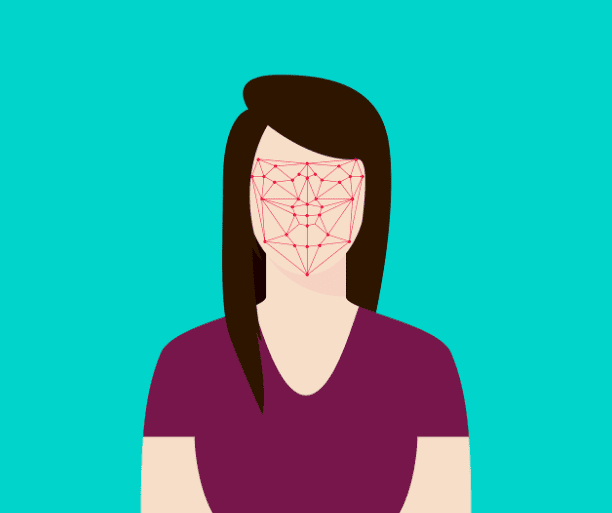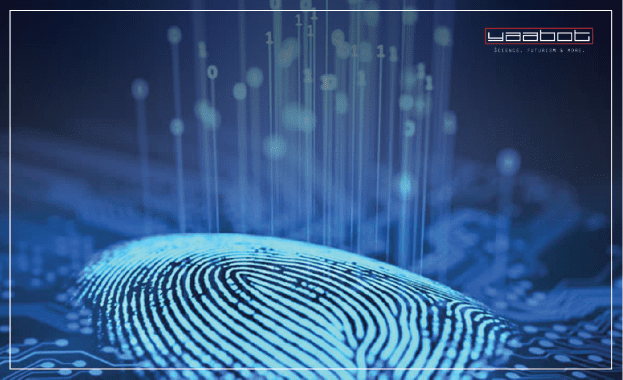The term biometric is derived from the combination of the terms “bio” (life) and “metric” (measurement). The prefix “bio” means “life,” and the suffix “metric” means “a system of measuring.”
To make the system safer and more advanced, biometric identity verification systems were chosen over other techniques like PIN codes and passwords. With this article, we aim to help you better grasp the specifics of biometrics technology, its myriad benefits, and potential drawbacks.
What is biometrics?
Biometrics is the umbrella term for a family of technologies that employ probabilistic matching to identify an individual by their unique biometric traits. Physical (such as fingerprint, iris, face, or hand shape) or behavioral traits may be used as biometrics. For this reason, biometric systems may be more efficient and trustworthy than other approaches, such as knowledge-based authentication processes or token-based systems, when validating specific persons’ identities.
Biometrics technology features also have the benefit of being more secure than passwords and tokens since they cannot be copied or lost. Therefore, biometrics are being utilized more often in identity management, especially for authentication.
Types of biometrics

There are two main types of biometrics, which are as follows:
1. Physiological Biometrics:
Physiological biometrics, as the name suggests, rely on objective, observable characteristics of the user, such as their fingerprints, palm prints, vein striations, blood vessel patterns in the eye and the retina, and even their voice. Scanners may create a profile of these traits for identification and verification purposes. Methods of physiological biometrics include:
Fingerprint: Everyone’s fingerprints are unique. Several approaches exist to quantify them. Image-based measuring discovers similarities between a person’s finger images and fingerprint pictures in the database. It’s to be noted that age/ disease/ injury may affect biometrics fingerprinting.
Facial Recognition: Facial features, including the distance between the nose, mouth, ears, face length, and skin color, are utilized for identification. Fog, sunglasses, age, etc., may impact accuracy.
Retina and Iris: Unique eye patterns may be utilized to identify and recognize people. Costly biometrics devices to evaluate the retina are rare. Diseases like cataracts affect iris patterns.
Voice ID: Pitch, tone, and modulation are measured. Medium security, owing to similar voices, is mainly used for verification. Noisy environments, age, and disease all reduce accuracy.
DNA: DNA is distinct and stable. Thus, security is excellent for identification and verification.
2. Behavioral Biometrics:
Behavioral biometrics relies on examining one’s routines and behaviours. User identification in this biometric system is based on behavioural characteristics such as typing velocity, locomotion, and handwriting. This method requires employing sensors powered by artificial biometrics technology to recognize and authenticate these one-of-a-kind behaviors.
Signature: The most prevalent biometric is the signature. They validate cheques by comparing the cheque signature to the database signature. Tablets and special pens compare signatures. Signatures are used to verify.
Keystroke Dynamic: This method measures keyboard use. Some things to consider:
- Speed
- Common mistakes
- Key depression lengths
How do biometrics work?
Rather than relying on something you own (like a key) or something you know (such as a password), biometrics employ something you are (like a password). Face, fingerprints, irises, and veins are only a few examples of physical characteristics that may be used as biometrics; other examples include a person’s voice, handwriting, or typing speed and rhythm. In contrast to keys and passcodes, personal attributes are difficult to forget or misplace.
Additionally, they are often difficult to mimic. Many people thus consider them superior to traditional security measures like locks and passcodes. There’s no denying biometrics has a high-tech appearance, yet every biometrics identity verification system follows the same three steps:
- Enrollment: The most fundamental aspects of your identity, such as your name and ID number, are recorded during the initial setup of a biometric system. Then, it photographs or makes a video of your distinguishing feature.
- Storage: In real life, most systems don’t save the whole picture or video. Instead, they analyze your characteristics and translate them into a coding language graph. In specific setups, this data is also stored on a portable “smart card.”
- Comparison: The next time you use the application, it will compare the details you provide to what it has stored. The biometrics identity verification system then verifies your identity and either proves it or rejects it.
Why use biometrics technology over traditional methods?
Both physical and digital security systems built using time-tested methods are effective. They are tried and proper techniques that have been used in a wide variety of contexts. Physical and digital security systems traditionally rely on user ownership of a security token or proof of specific expertise. They have been overworked to meet the rigorous authentication and security standards today.
Given its speed and accuracy, biometric authentication safety is a possible alternative to the numerous drawbacks of conventional security.
While biometric security addresses many weaknesses in conventional methods, such as spoofing, it is definitely not without its problems. However, while it’s true that no kind of protection is entirely foolproof, in the modern digital world, biometrics security is one of the most practical options for heightened security.
Advantages and disadvantages of biometrics
There are several evident advantages and disadvantages of using biometrics for security and associated purposes.
Advantages
There are observable benefits to using biometric technologies and new approaches. As an example:
- In contrast to even the most secure passwords, biometrics are difficult to forge or steal.
- Convenient and simple to use
- Changes that occur during a lifetime are minor.
- To be non-transferable
- All humans have the same elements in their bodies.
- It is possible to quantify elements to make future comparisons.
Disadvantages
However, biometrics has disadvantages that must be considered, just as there are to using any other method.
- Implementing biometrics has a high price tag.
- Data breaches may still occur if an unauthorized party gains access to a database, including biometric information.
- Biometric authentication may fail in the event of an injury.
- False rejections and acceptances are still possible.
- The elderly and those with impairments may have a more difficult time customizing specific systems.
Examples of biometrics in use
Biometric security includes:
- Voice Recognition
- Biometrics fingerprinting
- Iris Scanner/ recognition
- Face ID
- Heart-rate sensors
- Biometrics screening
Many sectors have successfully used biometrics security systems.
Biometrics secure papers and assets. Citibank utilizes speech recognition, and Halifax tests heartbeat devices to authenticate clients’ identities. Ford may install biometric sensors.
Globally, e-Passports include biometrics. In the U.S, e-passports feature a chip with a digital snapshot of a person’s face, fingerprint, or iris. Technology prohibits illegal data readers from reading the chip and skimming the data. As mentioned above, we’re experiencing the advantages and downsides of these security technologies in real time.
Security and privacy issues of biometrics?
Biometrics may compromise privacy, like other technologies. Biometrics are not intrinsically incompatible with privacy; biometrics identity verification systems that are developed and utilized affect how they affect people’s privacy. Next are some biometric privacy problems.
1. Function creep
The term “function creep” describes using data for purposes other than initially intended. This becomes a cause for worry when further use is not made clear to the person before they provide the information.
2. Hidden collection
Biometric information collected covertly or passively without agreement, involvement, or awareness is another privacy danger. Facial biometric information may be acquired from unknowingly snapped photos, and latent fingerprints can be extracted decades after a person has touched a hard surface.
3. Secondary information
Certain traits might provide secondary information about a person depending on the biometric and how the information is kept. For example, a primary picture of a face biometric may expose health information a person did not wish to give.
4. Consent
Biometrics question consent. In the context of information privacy, permission is based on a transactional model. People may make decisions regarding their personal information, such as when and how it is acquired. If biometric information is obtained covertly or passively, people may not be able to agree to or regulate its usage.
5. Other
Biometric verification and enrollment in a new system might be time-consuming. First-time system users may encounter unclear or complex procedures. These are only for everyone. Biometrics’ expanding usage might affect people’s identities beyond authentication or identification. Reducing an individual’s unique and natural biological traits to a template may be dehumanizing.
If a biometric verification or authentication system is faulty or has a high rate of false positives or negatives, human involvement and correction may offset the cost savings.
In addition to the potential for privacy invasions, critics of biometrics point out some issues, including:
- Overconfidence: Users may fail to take reasonable precautions to protect the biometric system’s data because they mistakenly believe biometrics are invulnerable.
- Accessibility: This means that the elderly and those with disabilities may not be able to use these systems until they are entirely replaced.
- Interoperability: The inability of different systems to communicate with one another could cause unnecessary delays in an emergency where data needs to be shared between agencies using other methods.
However, current biometric technologies need more scalability to collect and classify information on every person on Earth. Most keep a minimal amount of data on a few people. They often convert the information into a code rather than storing it as a record or a realistic portrayal of the described attributes.
Biometric authentication terms to know
Biometrics, in this context, refers to quantitative measurements of living organisms’ physiological or psychological characteristics. The term “biometric authentication” refers to a notion in computer security. Biometric authentication methods build a data-driven profile to verify a person’s identity.
The framework of biometrics devices, together with biometric data, allows security systems to verify users’ identities attempting to access specific programs or sections of a network. Since biometric authentication presents a formidable authentication challenge while providing a smooth user experience, it is rapidly becoming a standard part of multifactor authentication schemes.
Biometrics in future
Biometric verification is transforming our lives. It is used in almost every market to protect the personal and financial information of customers and employees. Soon, face recognition technology will be more widely used to reorganize and authenticate unique gadgets. It will transform our judicial and local police systems by adopting biometric verification technology to safeguard criminal records and case files. With this technology, we may send files and data without fear of theft. It will give security, comfort, and an easy-to-use solution, making our lives simpler and safer.
Wrapping Up
Businesses and consumers are looking for more foolproof authentication methods in various contexts, including online transactions, physical access control, and more. Biometrics technology may help in the battle against the rise of fraud in our society, but only if it is used widely and responsibly. However, even if biometrics can’t ensure complete safety just now, the technology is improving steadily.
Made it so far with us? Excellent! Here’s an informative video you can watch on biometrics devices for identity verification if you want to explore the topic further!


